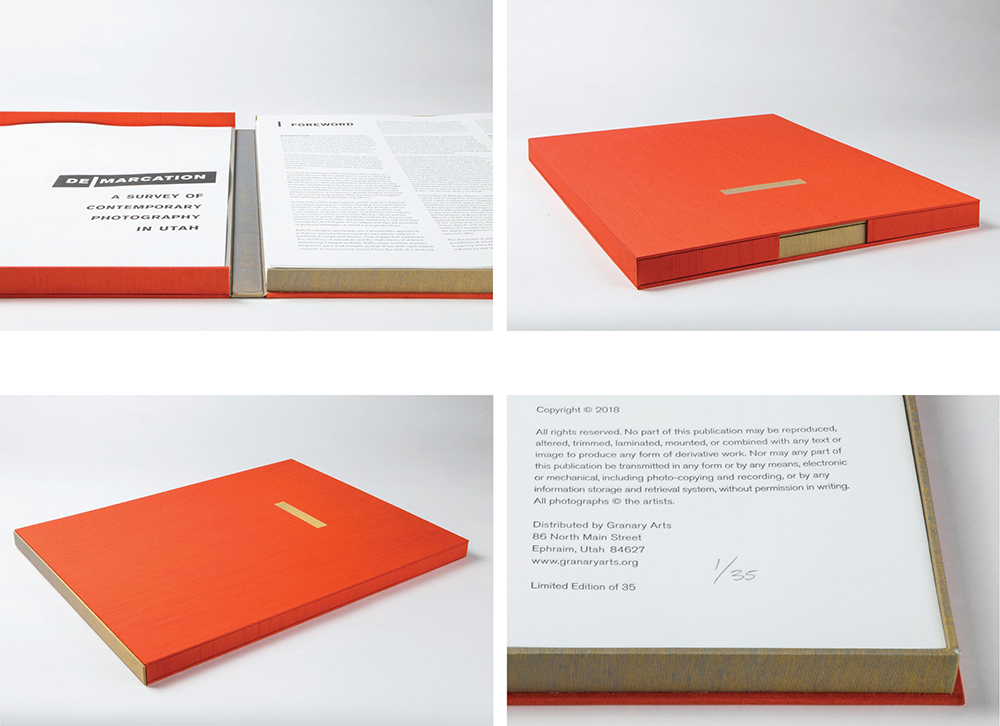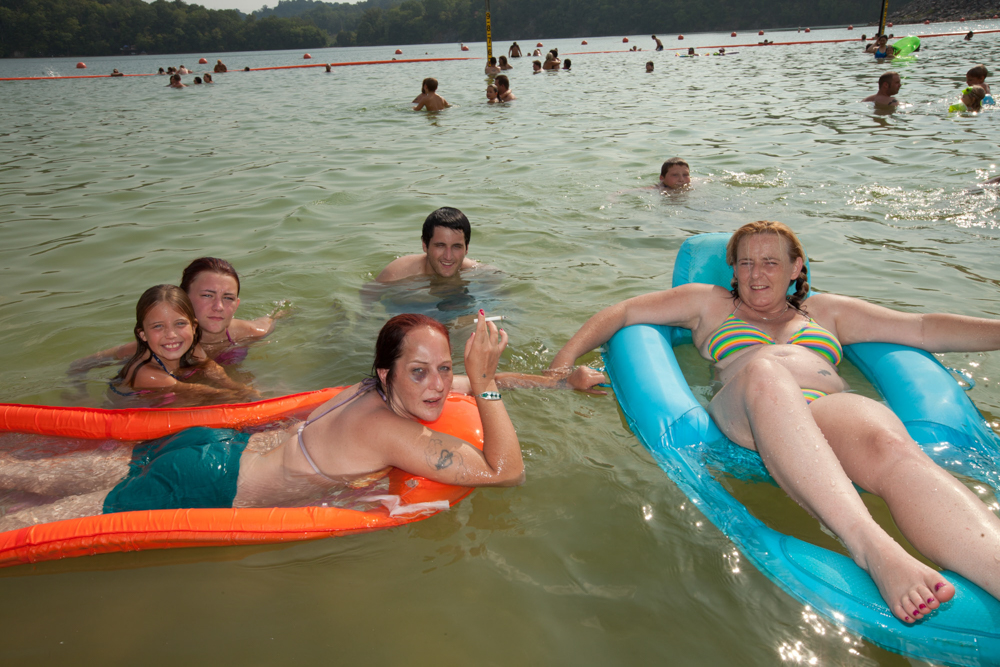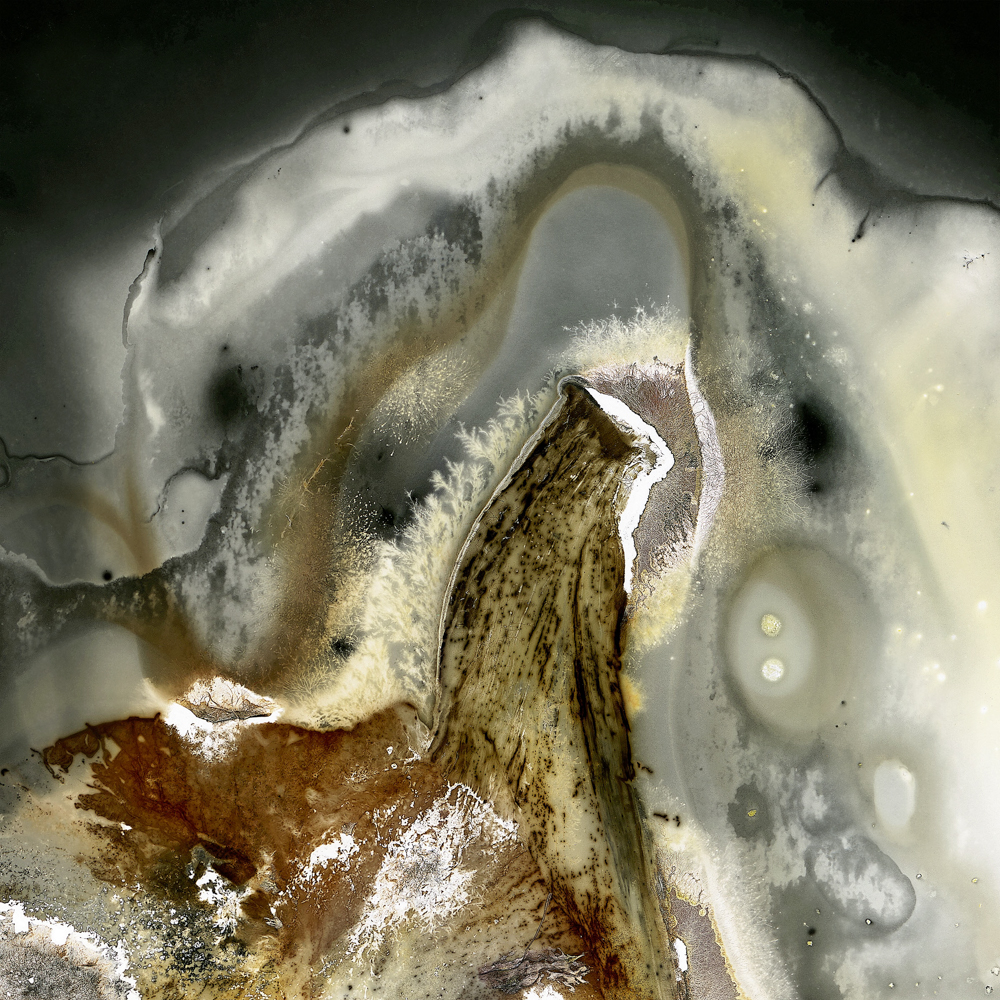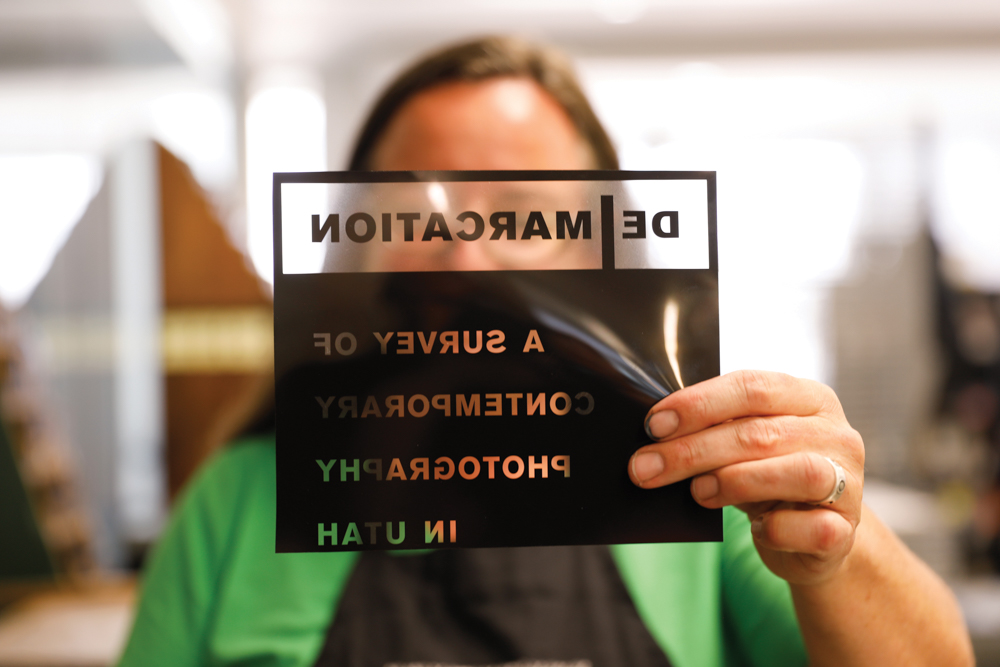DE|MARCATION: A Survey of Contemporary Photography in Utah
DE|MARCATION A Survey of Contemporary Photography in Utah
by Amy Jorgensen
DE|MARCATION is a limited edition portfolio curated by Amy Jorgensen and Edward Bateman, and was originally conceived by Amy Jorgensen to support the unique vision of artists in the state of Utah and to build on the rich discourse of imagemaking in the region.
Early photographic surveys of the American West explored the physical territory; this portfolio examines the conceptual landscape of creative practice by photographic artists spanning the vast spaces of Utah. The artists have strong connections to the state and their images represent a diversity beyond geographic boundaries; they interrupt convention and draw new lines. Intended to serve as a document of a historical moment, this portfolio was created as an act of generosity, especially through its inclusion of a younger generation of artists who represent not only the current state of photographic art, but also its future.
DE|MARCATION A Survey of Contemporary Photography in Utah from Granary Arts on Vimeo.
DE|MARCATION surveys the contemporary photographic landscape of creative practice by artists in the state of Utah as they navigate new territory in the global dialogue of imagemaking. With the visual cue of a golden, vertical line inset into a vast swath of red fabric, the portfolio design suggests an interruption of space, and the images themselves echo this intention: they delineate new boundaries and challenge the photographic traditions of the West as a hallowed land—the landscape as a rugged vista to be conquered and tamed under the banner of Manifest Destiny and the settling of Zion. The images in this portfolio reflect the dynamics of shifting cultural narratives and our relationship to place in a richly interconnected world.
The early 19th century survey photographers of the West were commissioned by government bodies and private industry to document the expansive vistas and provide a visual assessment for the feasibility of frontier expansion. Their photographs of the landscape channeled the sweeping romanticism of the sublime in the tradition of painters Albert Bierstadt and Thomas Moran and inspired a migration westward; these were images to be gazed upon.
Included Artists: Kimberly Anderson, Christine Baczek, David Baddley, Edward Bateman, David Brothers, Van Chu, Samuel Davis, Daniel George, Haynes Goodsell, Mark Hedengren, Amy Jorgensen, Natalie Kirk, Karalee Kuchar, Carsten Meier, Bernard C. Meyers, Andrew Patteson, Kim Raff, Nancy E. Rivera, Fazilat Soukhakian, Josh Winegar
In contrast, the landscape in this collection is often treated as a secondary character which is acted upon or used as a backdrop. Kuchar and Baddley situate the landscape as a collaborator in creative action—no longer a vista, but a medium integrated into the artists’ practice. They use performance and elements of nature to reframe our relationship to the land in terms of the body. Emerging as a prominent theme, performance ranges from the elaborate constructions of Brothers’ sets and his formulated scenes, to the intimate revelations of Jorgensen’s abstract imagery made from the surface of her body, images which question our assumptions of the photograph as truth-holder and witness.
Several of the artists define aspects of their work as a departure from cultural and religious customs. Narrative text, reenactments of religious myths, and the steady gaze of the portrait coalesce to articulate a collision between traditional narratives and confrontations of gender and power. Soukhakian’s work explores the dissonance between her native Muslim culture and her experience of gender, while Goodsell examines the tenuous line between private and public, and queer experience in self-portraiture. Through the directed gaze of her subject, Kirk flips the posturing
of gendered stereotypes to reveal a new gender binary.

©Kim Raff, Ace Spade practices drawing his hand gun in the living room of a members home during a training exercise. “Like a lot of people I want to have a plan. A want to have a group of people I can rely on not only for protection but also to protect. If something were to happen, civil unrest or a natural disaster and our government was not able to protect us, I don’t want to be one of those helpless people that’s just gonna fall by the wayside to irrelevance or insignificance. I want to actually do something in my community to show that I’m willing to do what it takes. I’m a patriot. I’m willing to bleed on that flag so those strips stay red,” says James Wood.
Raff, Hendengren, and George use a documentary approach to juxtapose normalized environments and objects against a backdrop of complicated themes. They engage their audience in the narratives of subculture and the implications of violence. Referencing a staged aesthetic, Raff’s image could be anyone’s living room, yet a small romantic portrait of two wide-eyed children suggests an innocence far removed from the stalk of a clean-cut man holding a pistol. George collects the refuse of a population with nothing left to conquer, wherein the target practice litter of household items found in the open landscape is presented as precious and disembodied. On the surface, Hendengren’s image is playful: two young women float in blow-ups on a tilted horizon of water, yet one has a black eye and a cigarette in hand. All of these images hint at an undertow of darkness and stories of which we do not know the whole.
A revised interpretation of the landscape unfolds in the works of Anderson and Patteson. They work through the lens of the built environment and their images are a departure from the marketing which promotes Utah as a pristine wilderness and an outdoor adventure destination. Looking at industrial interests in Great Salt Lake, Anderson frames a virtual mountain of salt with a road leading to a false destination, while Patteson transects the byway of 7800 South, traversing diverse economic neighborhoods and commercial districts. Once a beacon for commerce, Patteson’s image of a faded pink sign is broken, empty, and dilapidated.
The use of satellites and the exploration of space has fundamentally altered our methods of mapping, communication, notions of proximity and accessibility, and our relational understanding of our place in the universe. Meier, Meyers, and Davis continue the investigation of the effects of the built environment, and build on the notion of frontier expansion. The narrative of the West is intimately tied to water—John Wesley Powell’s expeditions were instrumental in mapping the early boundaries of Utah and the future of water use in the region. Meier’s image of Glen Canyon Dam, created by overlapping satellite and topographic mapping, compels us to consider the new frontier of space. Likewise, Meyers’ dismembered urban landscape, in which humans inhabit a zombie-like state, reads like a glitch or the chatter of broken signal—a fuzzy patchiness of information beaming back and forth between earth and orbiting satellites. And finally, Davis situates the conversation in a panoramic view of an anonymous desert landscape with a blurred UFO escaping the frame – do we know what is out there?
In the images of Winegar, Bateman, and Baczek, there is a literal rupture and disintegration of the photographic image through the use of experimental processes. Tackling the subjects of personal memory, the rarefied object, and organic matter, the physical breakdown of the image and subject speak to the larger context of disrupting boundaries. Winegar’s image explores the correlation between light and revelation, applying earlier notions of the sublime to give precedence to intimate personal narrative. For Bateman, the breakdown of physicality renders an abstraction akin to
Meier’s satellite view from outer space where our connection to physical ground erodes into fractal-like waterways. And in the drips of her chemical process, Bazcek alludes to the displacement of unique objects and an erasure of analog experience. They all address the broader discussion of how photographic method and the digital revolution has reoriented our experience of place, reality, and each other.
The discussion of reality versus artifice parallels a broader cultural acceptance of virtual experience. Referencing early 19th century images by Anna Atkins, Rivera crafts a transition between authenticity and simulacrum, seducing her audience into belief. As Bateman’s leaf is the display of natural disintegration, Rivera’s is the embodiment of artifice. Brothers epitomizes this critique in the dystopian game show stage where his characters and props stand as hyper-saturated cultural archetypes hungry to win. And like a magician, conjuring dragons with smoke and mirrors, Chu creates an ethereal and ephemeral landscape using ink and water as a substrate. As a culture, we have moved away from the tangible and embraced the inky dream of Chu’s illusion.
DE|MARCATION A Survey of Contemporary Photography in Utah is an interruption of photographic tradition and a visual indicator of a shifting culture. In the way that Goodsell’s work functions as a mirror of the self between past and present, this portfolio is a reckoning of a cultural moment—this is photography now.
The organization of the project was a collaborative effort by Amy Jorgensen, Edward Bateman, and Rebecca Ross. The portfolio box, letterpress printed title, index and essay pages were created in collaboration with Red Butte Press at the University of Utah, and distributed by Granary Arts. Red Butte Press faculty and staff—Crane Giamo, Annie Hillam, Marnie Powers-Torrey, Jonathan Sandberg, and Emily Tipps—produced the box and non-photographic content. The participating artists self-funded the production of the prints and portfolio with the early support of Utah Division of Arts and Museums and other donors. Generosity is the unifying principle that made this project a reality. It is with gratitude that its creators wish to thank all involved in this extraordinary undertaking.
Posts on Lenscratch may not be reproduced without the permission of the Lenscratch staff and the photographer.
Recommended
-
Spotlight on the Photographic Arts Council Los AngelesNovember 23rd, 2025
-
100 Years of the Photobooth: Celebrating Vintage Analog PhotoboothsNovember 12th, 2025
-
100 Years of the Photobooth: The Photobooth Technicians ProjectNovember 11th, 2025
-
100 Years of the Photobooth: Rafael Hortala-Vallve: AUTOFOTONovember 10th, 2025
-
BEYOND THE PHOTOGRAPH: Q&A WITH PHOTO EDITOR JESSIE WENDER, THE NEW YORK TIMESAugust 22nd, 2025







































































